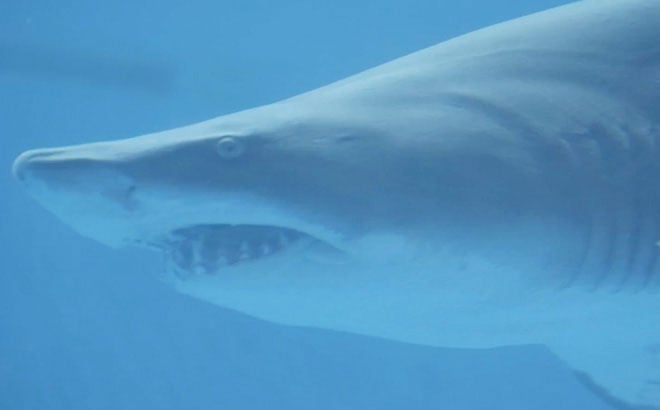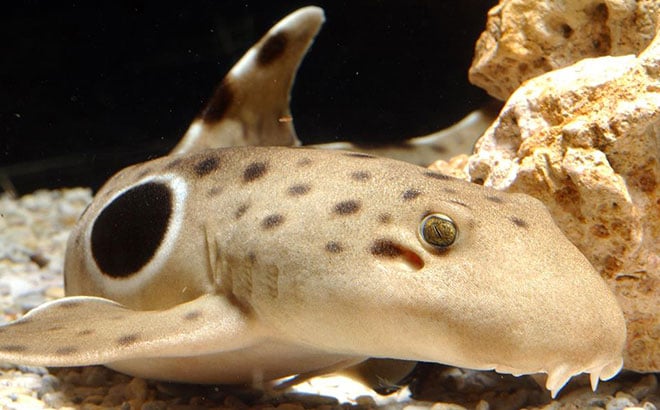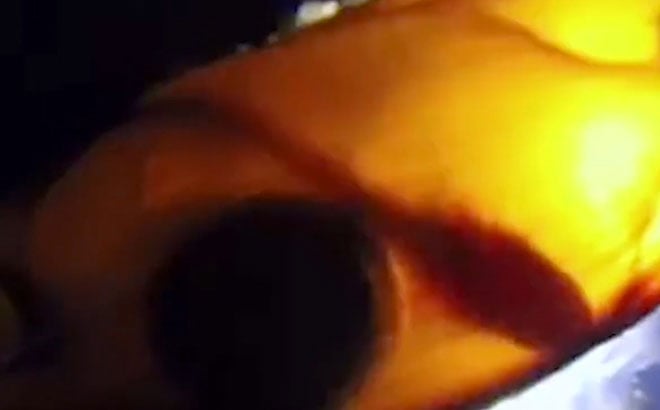SeaWorld Orlando’s Sharks: Up Close and Personal
August 7, 2018
What's beautiful, docile, and even a little bit funny? No, it's not a flamingo, and it's not an armadillo. It's a shark!
While a lot of people use words like predatory and powerful to describe sharks, Dr. Gisele Montano - a research associate at the SeaWorld and Busch Gardens Species Preservation Lab - has come to appreciate the finer nuances and characteristics of the different species of sharks at SeaWorld, showing that we have nothing to fear with these animals.
Join us in getting up close and personal to these species with some awesome insights from Dr. Montano - and conquer your fear by visiting them at Shark Encounter on your next visit!

See Sand Tiger sharks like this beauty for yourself at SeaWorld's Orlando's Shark Encounter!
Sand Tiger Sharks
Q. How do you describe a Sand Tiger shark?
Dr. Montano: Sand Tiger sharks are gray-brownish sharks, a rust color on top and white underneath. When you walk around the tunnel at SeaWorld's Shark Encounter exhibit, you can see why they would be intimidating, with all of these teeth coming out of their closed mouths. But Sand Tiger sharks aren't mean at all - they're actually a very docile species that just kind of glide about.
Q. Why do Sand Tiger sharks have a slow reproductive rate?
Dr. Montano: Female Sand Tiger sharks can have one to two pups at a time, so the species has a very slow reproductive rate. If we can freeze gametes from sharks, if something horrible happens in the wild then we have a shot at bringing them back. And that's very important because in the wild, sharks are the apex predators and help keep the balance of the food chain, which helps keep our oceans healthy.

See Epaulette sharks "walk" on the sand at SeaWorld Orlando's Shark Encounter!
Epaulette Sharks
Q. Can Epaulette sharks really walk on land?
Dr. Montano: Epaulette sharks use their pectoral fins to crawl, so it actually looks like they're walking on the sand at the bottom of the ocean! Their name comes from the French word "epaule", which mean shoulder - these sharks have a distinguishing large black spot behind each pectoral fin.
Q. What is one thing many people don't know about Epaulette sharks?
Dr. Montano: Epaulette sharks lay two to three eggs at a time, which take nearly 100 - 130 days to hatch. Once an Epaulette pup is born, it's fully formed and ready to just go and fend for itself. Also, in my experience, these sharks are a little bit fussy.

See shark eggs at SeaWorld's Shark Encounter!
Whitespotted Bamboo Sharks
Q. How do the eggs from a Whitespotted Bamboo shark differ from other shark species?
Dr. Montano: Whitespotted Bamboo shark eggs are incredible, because they are a bit translucent. If you add a little bit of light, you can see how the shark pup forms over time and how it's going to consume the yolk inside the egg.
Q. What's it like to work with Whitespotted Bamboo sharks?
Dr. Montano: Whitespotted Bamboo sharks each have their own personalities. They're very curious animals, so if you work with just one animal, chances are that once you look up, you suddenly have five or more animals that have come over to see what you are doing.
While a lot of people use words like predatory and powerful to describe sharks, Dr. Gisele Montano - a research associate at the SeaWorld and Busch Gardens Species Preservation Lab - has come to appreciate the finer nuances and characteristics of the different species of sharks at SeaWorld, showing that we have nothing to fear with these animals.
Join us in getting up close and personal to these species with some awesome insights from Dr. Montano - and conquer your fear by visiting them at Shark Encounter on your next visit!

See Sand Tiger sharks like this beauty for yourself at SeaWorld's Orlando's Shark Encounter!
Sand Tiger Sharks
Q. How do you describe a Sand Tiger shark?
Dr. Montano: Sand Tiger sharks are gray-brownish sharks, a rust color on top and white underneath. When you walk around the tunnel at SeaWorld's Shark Encounter exhibit, you can see why they would be intimidating, with all of these teeth coming out of their closed mouths. But Sand Tiger sharks aren't mean at all - they're actually a very docile species that just kind of glide about.
Q. Why do Sand Tiger sharks have a slow reproductive rate?
Dr. Montano: Female Sand Tiger sharks can have one to two pups at a time, so the species has a very slow reproductive rate. If we can freeze gametes from sharks, if something horrible happens in the wild then we have a shot at bringing them back. And that's very important because in the wild, sharks are the apex predators and help keep the balance of the food chain, which helps keep our oceans healthy.

See Epaulette sharks "walk" on the sand at SeaWorld Orlando's Shark Encounter!
Epaulette Sharks
Q. Can Epaulette sharks really walk on land?
Dr. Montano: Epaulette sharks use their pectoral fins to crawl, so it actually looks like they're walking on the sand at the bottom of the ocean! Their name comes from the French word "epaule", which mean shoulder - these sharks have a distinguishing large black spot behind each pectoral fin.
Q. What is one thing many people don't know about Epaulette sharks?
Dr. Montano: Epaulette sharks lay two to three eggs at a time, which take nearly 100 - 130 days to hatch. Once an Epaulette pup is born, it's fully formed and ready to just go and fend for itself. Also, in my experience, these sharks are a little bit fussy.

See shark eggs at SeaWorld's Shark Encounter!
Whitespotted Bamboo Sharks
Q. How do the eggs from a Whitespotted Bamboo shark differ from other shark species?
Dr. Montano: Whitespotted Bamboo shark eggs are incredible, because they are a bit translucent. If you add a little bit of light, you can see how the shark pup forms over time and how it's going to consume the yolk inside the egg.
Q. What's it like to work with Whitespotted Bamboo sharks?
Dr. Montano: Whitespotted Bamboo sharks each have their own personalities. They're very curious animals, so if you work with just one animal, chances are that once you look up, you suddenly have five or more animals that have come over to see what you are doing.


